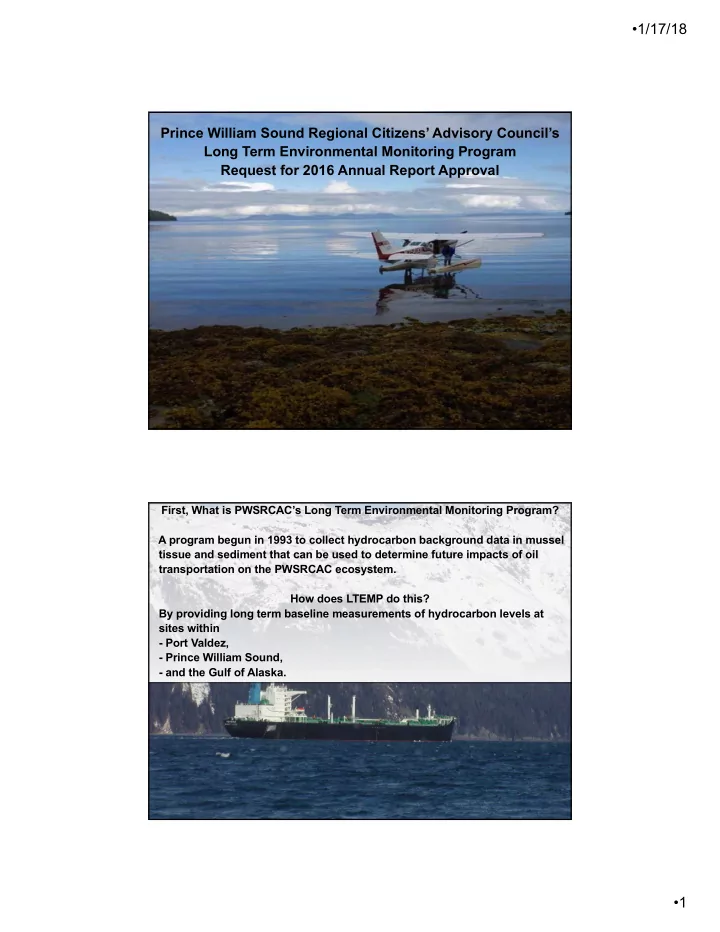

•1/17/18 Prince William Sound Regional Citizens’ Advisory Council’s Long Term Environmental Monitoring Program Request for 2016 Annual Report Approval First, What is PWSRCAC’s Long Term Environmental Monitoring Program? A program begun in 1993 to collect hydrocarbon background data in mussel tissue and sediment that can be used to determine future impacts of oil transportation on the PWSRCAC ecosystem. How does LTEMP do this? By providing long term baseline measurements of hydrocarbon levels at sites within - Port Valdez, - Prince William Sound, - and the Gulf of Alaska. •1
•1/17/18 Long Term Environmental Monitoring Program Goals and Objectives Goal 1: Monitor impacts from oil transportation activities on the biota of Prince William Sound and the Gulf of Alaska at selected sites Goal 2: Identify the sources of hydrocarbon residues in sediments and mussel tissue •2
•1/17/18 Long Term Environmental Monitoring Program Goals and Objectives • Goal 3: Provide recommendations for future response and mitigation • Goal 4: Continued improvement of the monitoring program LTEMP Sampling Plan – • Ten sites through the region - a control site in E PWS (un-oiled during EVOS) • Port Valdez sites sampled annually, including in 2016. then, every fifth year all 10 existing sites sampled (this summer 2018) • Future evolution of LTEMP ~ focused on presence vs. impact... - addition of passive sampling devices (absorbent plastic strips) - continued evaluation of mussel genomics •3
•1/17/18 •Some Findings – In recent years, petrogenic hydrocarbon inputs from the terminal and tanker operations have been declining in both mussels and sediments • The decrease likely reflects a combination of: - reduced ballast water discharge volumes from decreased tanker traffic due to decreased North Slope oil production - the transition to double - hulled tankers with segregated ballast tanks, and - improved efficiency at the terminal in removing particulate/oil - phase polycyclic aromatic hydrocarbons (PAH) •• Low levels of ANS oil are evident in Port Valdez sediments based on biomarkers; - biomarker profiles from 2011 through 2016 strongly confirm, however, that the source is directly linked to the BWTF effluent •4
•1/17/18 Questions? Requested Action: Accept the LTEMP Annual Report by Contractor PECI titled “Long Term Environmental Monitoring Program Report: 2016 Sampling Results and Interpretations” See more on LTEMP or get all the LTEMP data here – http://www.pwsrcac.org/programs/environmental-monitoring/ltemp/ •5
Recommend
More recommend